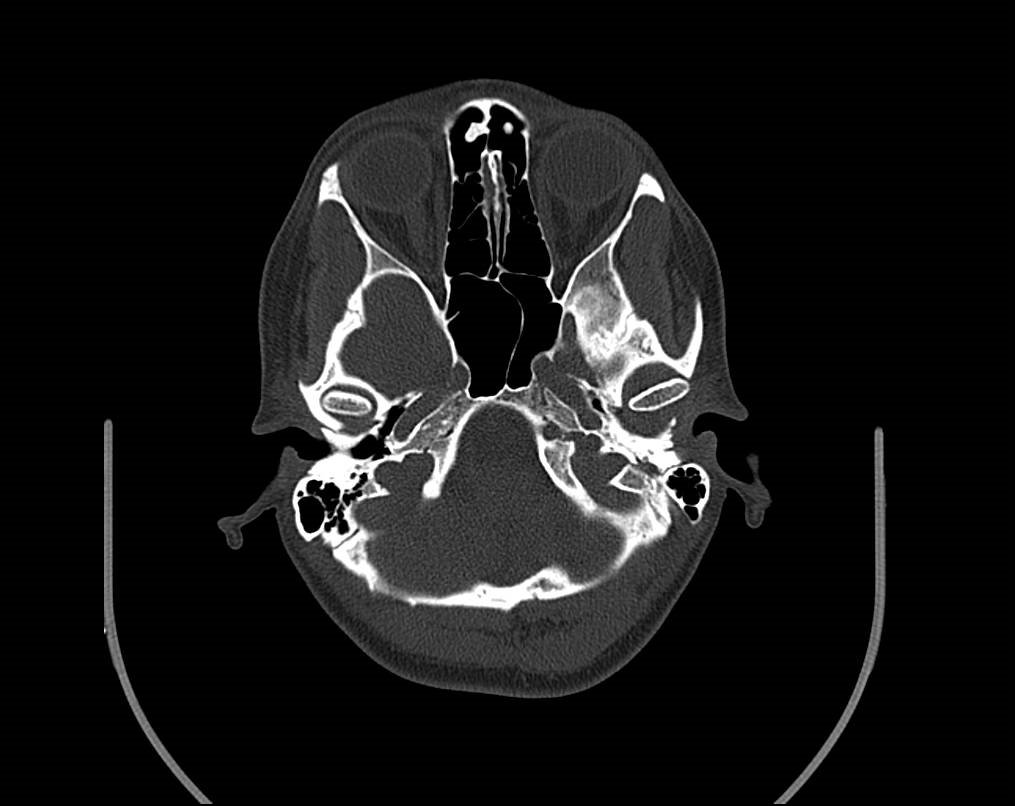Fluid on one side of the nose: is it cerebro-spinal fluid?
Fluid on one side of the nose

Sara got up one morning and as she went to wash her face, watery liquid came out of the left side of her nose. A 32-year-old healthy woman, she had seen nothing like this before. The liquid increases as she tilted her head to the right. She had no trauma or fever in the previous days. Before this situation, she decided to go to the Emergency Department.
Evolution
When she walked into the emergency room, the doctor who attended her could not believe her story. The first question was to know the characteristics of the liquid. It was crystalline, but with a certain yellowish color . She remembered a similar case when she was in Neurology, although the color looked like something different. The first thing she thought was that it was cerebro-spinal fluid, possibly a fistula through the base of the skull. She asked for a CT scan and for a fluid analysis.
Clinical Reasoning
The doctor who saw the patient thought of a fistula of cerebrospinal fluid, because she had seen a case recently, when she was in Neurology. This is called “availability bias”. On the other hand the doctor used a safety approach, the worst case scenario, trying not to forget a serious disease.
Evolution
The analysis of the liquid revealed the presence of epithelial cells and a mucoid material, without cerebro-spinal fluid characteristics. At that time the possibility of fistula was eliminated, but the etiology was not clear. We had to wait for the CT scan to observe the presence of a mucinous material inside the left maxillary sinus.

Clinical Reasoning
The anatomical and pathophysiological strategy is very practical to explain symptoms that are not habitual, since a structural reasoning can be made, in this case starting from the base of the skull, continuing with the maxillary sinus and nostrils
Final Diagnosis
Purulent material and fluid in the left maxillary sinus, probably related to a cyst.
Key Points
In situations of uncommon signs or symptoms, it is a good rule to use reasoning strategies. One of them is the anatomical and pathophysiological. Another may be the deterministic strategy, that is to follow algorithms, but this usually requires an important degree of clinical information. Although it is practical to remember similar cases, we must be careful and not to choose only the one that appears faster in our mind (availability bias).
Information to Patients
We are accustomed to seeing blood through the nostrils when we are hit or in people who have a hemangioma (excess of vessels in the area of the nose). When another type of fluid appears it may be a cyst in the area of the nostrils or in the sinuses, which are spaces that exist in the bones of the face. The most serious thing that can occurrs is the appearance of cerebro-spinal fluid through the nose. This liquid is crystalline, and it is in the brain. When it appears it can be due to a fistula (communication) between the brain and nostrils, generally after trauma, and in this case it is a serious complication.
Author: Lorenzo Alonso. MD. Foro Osler


